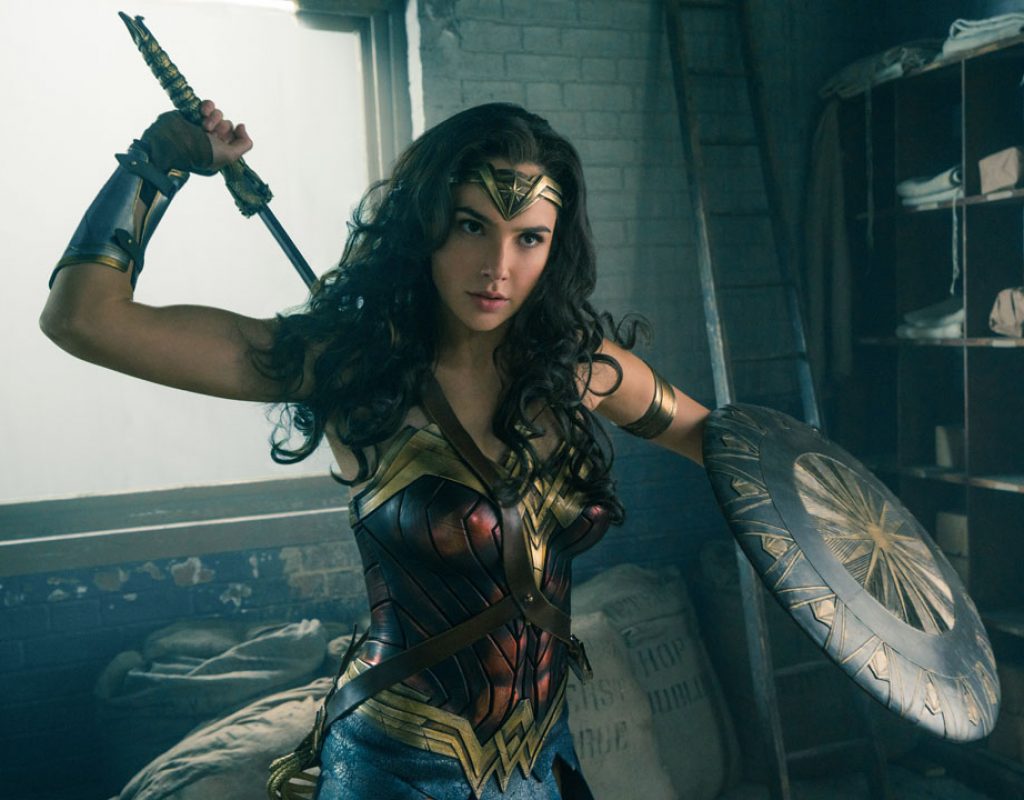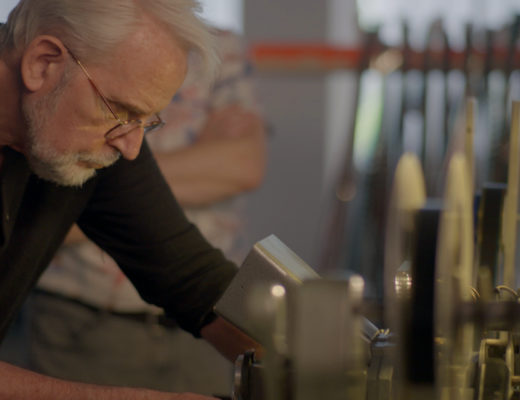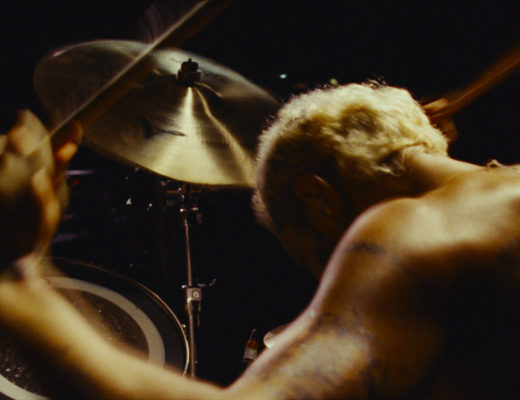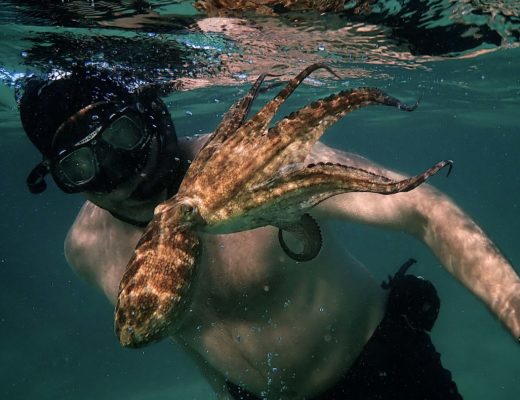Martin Walsh won an Oscar and an Eddie for Best Editing for Chicago (2002). His editing credits go back to the mid-‘80s and include films like Bridget Jones’ Diary, Thunderbirds, V for Vendetta, Inkheart, Clash of the Titans, Jack Ryan: Shadow Recruit, and Cinderella. Art of the Cut previously spoke with Martin about Eddie The Eagle, and are joining him again to discuss Wonder Woman.
HULLFISH: What was the schedule like on Wonder Woman?
WALSH: Well on paper it probably looked pretty generous, but like most projects it disappears pretty fast.
HULLFISH: Do you remember when you started shooting?
WALSH: November 2015 until the end of April ’16 followed by about a year of post.
HULLFISH: How’s your appendix, my friend? Last time we talked, you were off a picture because of an appendectomy.
WALSH: The appendix is gone. Thank god they don’t grow back. That was the worst pain I’ve ever experienced in my life, I don’t recommend it.
HULLFISH: I have this great quote from Robert McKee the guy that wrote the scriptwriting book, “Story.” He says, ”If the story you’re telling is the story you’re telling you’re in trouble.” Is that true in editing?
WALSH: Jesus, that’s a tough question!
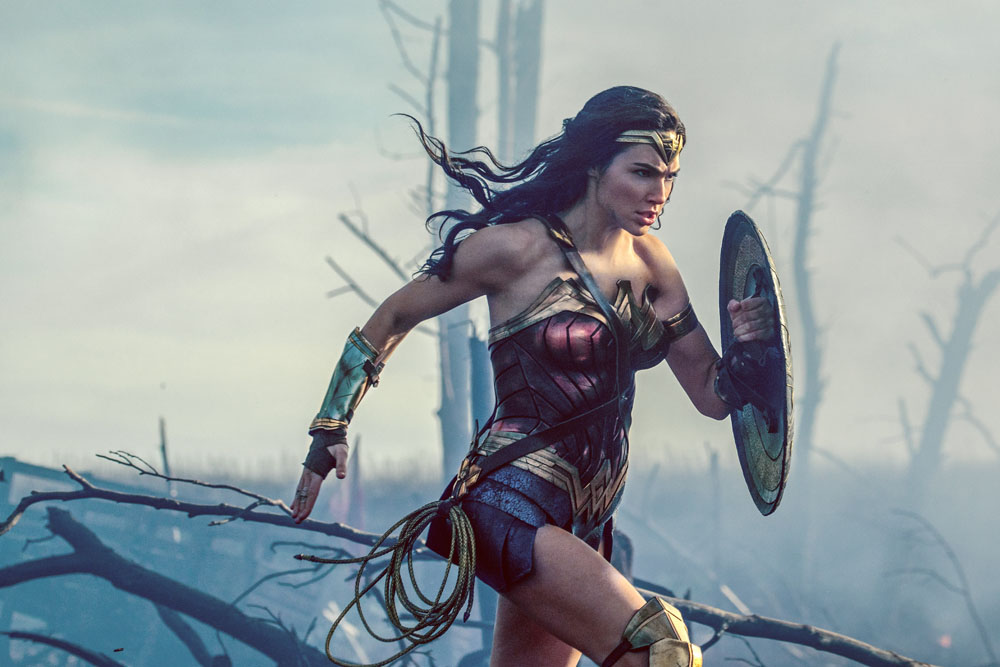 HULLFISH: Is subtext important? Does it matter that the editor knows the deeper meaning of the movie? Or just what the plot and story is?
HULLFISH: Is subtext important? Does it matter that the editor knows the deeper meaning of the movie? Or just what the plot and story is?
WALSH: The meaning of the Wonder Woman movie…not to be too cheesy about these things is: love conquers all and people are not always completely good and they are not always totally bad. They are capable of anything and everything. That’s the take-away for this movie.
HULLFISH: Every movie – and we talked a little about this when I interviewed you about Eddie the Eagle – every movie is a balance of making people care about the characters and then telling the plot itself or the story itself. How do you know when you have that balance right? Between because setting up characters can go on forever. So many people say the beginning of a movie is almost always too long.
WALSH: Absolutely.
HULLFISH: So how do you know that people care enough so now we can get along with the action.
WALSH: Some people felt the beginning was still a little bit too long, even after we’d finished it. We felt that everything we had in the beginning was essential to the establishment and the setup and story that we needed to put in there. It’s character stuff. It’s organic to the whole.
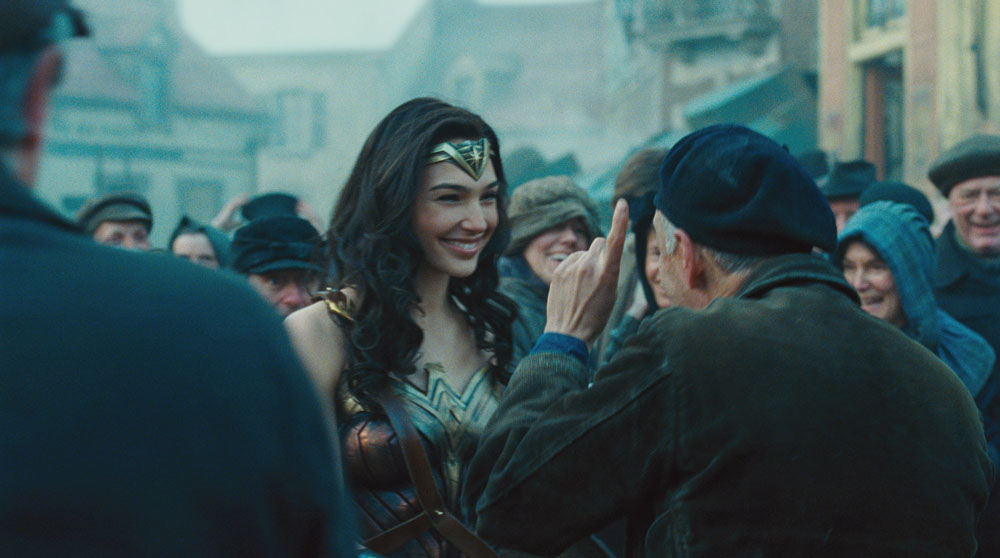 HULLFISH: But the danger is that if you shorten it too much, you get to the action sooner, but then nobody cares about what happens.
HULLFISH: But the danger is that if you shorten it too much, you get to the action sooner, but then nobody cares about what happens.
WALSH: Exactly. We argued this a lot. The notes are generally: Can you make the movie go faster? Can the movie be shorter? It’s a generalized, all-encompassing note that things have to be faster, shorter, get there quicker. Get to the next action a beat faster, because they feel or they fear that the audience can’t enjoy what we are offering them. There is a nervousness about that kind of stuff, so we pushed back a lot – Patty especially (director, Patty Jenkins) – on that stuff that felt long to them, but we felt was essential character, romance, human emotional stuff. Things that people need to experience in order to get on the side of the character in the movie. Real life.
HULLFISH: Was she a proponent of laying out the emotional context because she was a woman or because she’s a writer or is it simply that all directors want that?
WALSH: That’s an interesting one isn’t it, do all directors want that? I doubt that judging by some of the movies we see. I think there are directors who are nervous of emotion where it becomes more about the visceral, the physical. Maybe it is because Patty comes from the point of view of a woman but it’s a DC movie so it has to deliver on the comic book level but it delivers on an emotional level too. It delivers in a lot of areas that this genre of movie doesn’t generally spend a lot of time dealing with like mother-daughter relationships and there’s a real romantic interest there with Chris Pine, Wonder Woman’s journey, her childhood, her discovering that she’s capable of superhuman acts. All that takes a bit of time. You can’t rush through it and we felt the audience needed that time for things to sink in and to experience that alongside the characters.
HULLFISH: The last time we talked, it was about Eddie the Eagle and there was a scene with a Finnish skier that the previous editor had removed but you felt – and so did I – that it was the essence of the movie. Was there a similar scene in Wonder Woman that held the essence of the movie?
WALSH: That’s a scene quite close to the end of the movie I think. It’s between Gal Gadot and Chris Pine where they each sum up their feelings about what they’ve been through for the last couple of hours.
HULLFISH: You’ve cut very many great movies. Do you find that those essence-of-the-movie type scenes … do those things happen at the end and the beginning a lot or are they always at the end? Can you think through some of the movies that you have cut? It would seem like you would set it up at the beginnings so the audience knows, “Oh, this is what this movie is about!” Or it’s at the end so that’s what they remember when they walk out of the theater?
WALSH: Are we talking about the end of the second act, launching into the third act in a traditional three act structure?
HULLFISH: That’s interesting
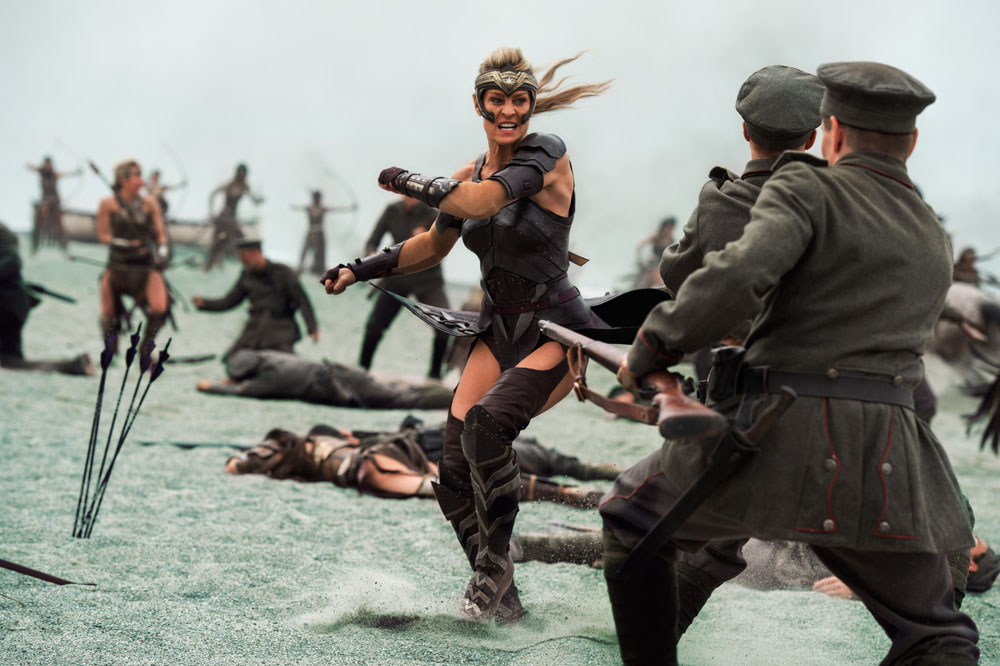 WALSH: Is the twist in the end usually the climax of the second act that launches the action into the last act and changes everything so that the final act gets the propulsion it needs?
WALSH: Is the twist in the end usually the climax of the second act that launches the action into the last act and changes everything so that the final act gets the propulsion it needs?
HULLFISH: That’s a great point. I bet that is where that scene lands a lot of times.
WALSH: If the movie is structured in that way often it’s a confrontational scene between the protagonist and the bad guy about what the f*ck are you going to do now? Now the rest of this movie is up to you, you’ve got to do something. There’s a challenge, a face off.
HULLFISH: You’re working again with Matthew Tucker as an associate editor. Can you tell me a little bit what his title is about? It’s a move up from assistant but its not an additional editor or a co- editor. How does your relationship with him work and why did he get that title?
WALSH: It’s a step up from being first assistant and its not a co-editor credit because they don’t want to hire a second editor. Matt and I have worked together for a long time. These movies are huge and we get a lot of dailies, so there’s a lot of work for any one person to take on. He’s also a really good sound editor, he’s very good at presentation, he can mix the sound nicely in the Avid and we can present scenes well. I have a good guy there. In fact he’s just gone off to cut his first movie.
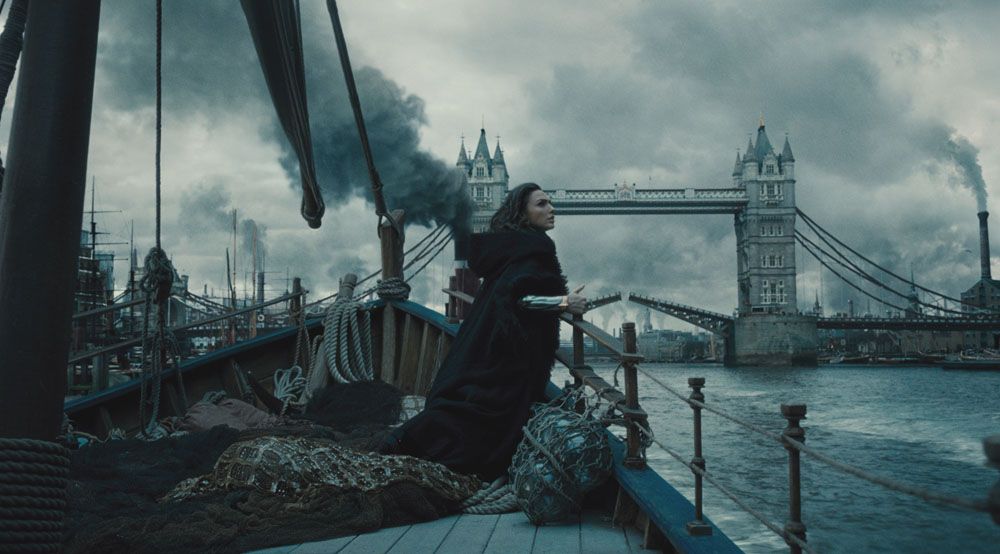 HULLFISH: Oh! Good for him! While we’re on the subject of Matthew: You mentioned in your earlier interview, about Eddie The Eagle, that Matthew does a lot of your sound work after you do the first picture pass. On action scenes, do you find the pacing of your second pass needs to change because the new sound provides an additional rhythmic layer then you have to accommodate?
HULLFISH: Oh! Good for him! While we’re on the subject of Matthew: You mentioned in your earlier interview, about Eddie The Eagle, that Matthew does a lot of your sound work after you do the first picture pass. On action scenes, do you find the pacing of your second pass needs to change because the new sound provides an additional rhythmic layer then you have to accommodate?
WALSH: Yeah. Usually tightening isn’t it? Things play a little slower when it’s got the music and sound effects on there. As soon as you put music on a sequence it plays a bit slower.
HULLFISH: With music on it, what about sound effects?
WALSH: Most sequences need a few frames off as they progress, especially action sequences. We tend to have things slightly loose at the beginning until VFX have had a pass.
HULLFISH: Everybody is different. I was talking to Dody Dorn and she was saying sometimes when you get the audio in she felt like you need to have the space for the audio to exist. Like you might have cut it and then, when you get the sound into it, you realize that you need to lengthen it instead of shortening it. I think the shortening is always that’s almost, if you had audio or not, a second pass is almost always shortened I find.
WALSH: I think I see what Dody is saying. The thing on VFX movies is you’re always trying to give everything space to breathe. There’s always a danger of not allowing everybody else to get their work in for the sake of pace and speed so that includes allowing for sound effects too.
HULLFISH: On Wonder Woman were you afforded the luxury of a screening room for dailies? Or did you watch them on your Avid?
WALSH: We had the luxury of a screening room at the studio. So Matthew and I sat through every single frame, usually at around 11am while we were shooting. Everyone else got an ipad.
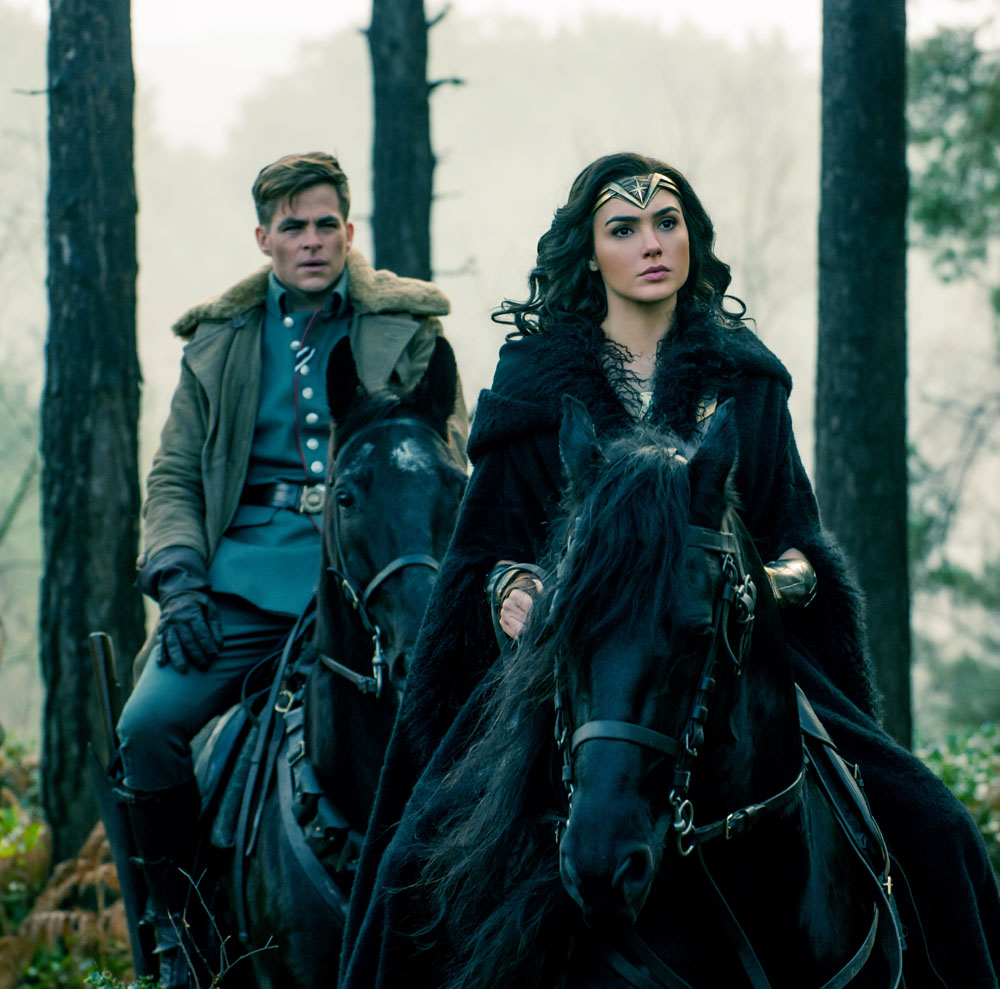 HULLFISH: Back when you were cutting on film, was it the tradition to watch those things with the director in the screening room?
HULLFISH: Back when you were cutting on film, was it the tradition to watch those things with the director in the screening room?
WALSH: Oh absolutely. At the end of every day, we’d wrap and all head off to the screening room. Glass of wine and a packet of crisps, I miss that.
HULLFISH: Tell me about missing that. What is the loss of doing it with everybody on iPads?
WALSH: The loss is not being in a room with a group of people reacting to what they’re seeing. To be able to sit in a room with the director and hear what they have to say as it goes through the gate. There’s nothing better than hearing someone say, “That’s a great take, I love that, I love that look she gave him … Oh that’s a good piece of action. Use that, don’t use this one. You see that thing there that she did with her eyes? I hate that thing she does with her eyes.” I miss it when people laugh at jokes, cry at the emotional scenes. All of it is really useful information for me, because I can go away knowing that what I’m putting together is closer to what the director will be expecting. Now I just get circled takes, or a note sent from the script super saying, “Patty really liked this one.” But if the take is three and a half minutes long and full of resets what is it? There’s a lot more guesswork involved.
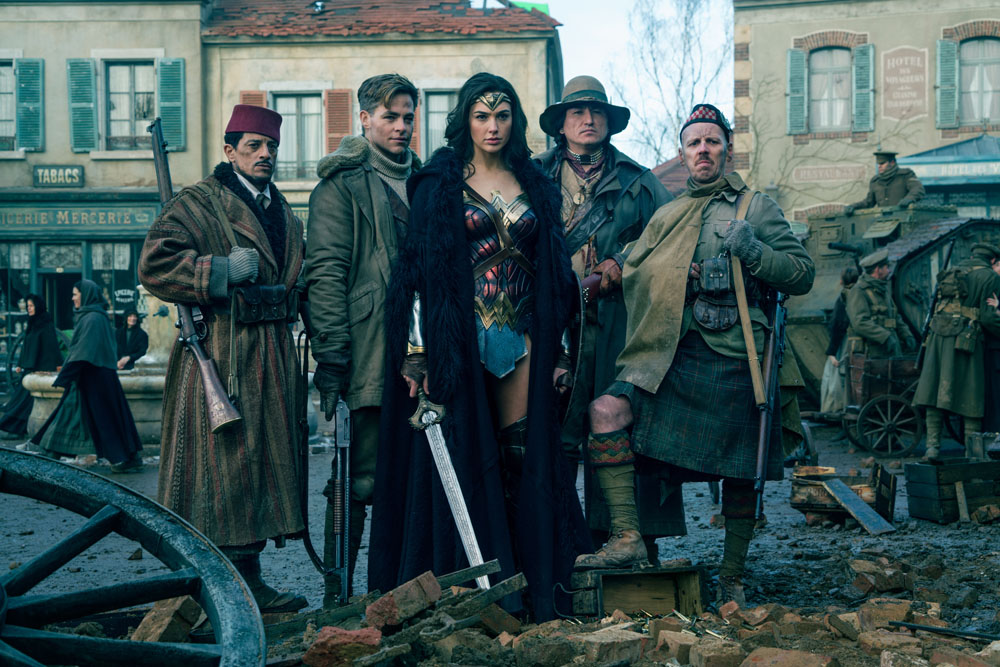 HULLFISH: Correct me if I am wrong, but the director’s vision of whether that scene is great take or not is very different watching it in person on the set and watching it in dailies?
HULLFISH: Correct me if I am wrong, but the director’s vision of whether that scene is great take or not is very different watching it in person on the set and watching it in dailies?
WALSH: Exactly, and if you’re not doing it in dailies, it can take a while to discover that: ”I thought that was the take. Maybe it is not the take. Let’s look at them all again.” Screening dailies together is a short cut to getting a better first cut.
HULLFISH: I just worked on a film where I was able to sit down almost every night with the director and a couple of the producers and the cinematographer. I didn’t play all the dailies but I would play certain selects that I thought were worth everybody watching.
WALSH: That is the way it should be. But that time in the screening room that you actually had with them – it was your own private session – that hour at the end of the day and the walk with the director to the car after: “What do you want to try? What do you want to do? How do you feel about music here?
HULLFISH: Too much pressure on the directors at the moment
WALSH: Too much pressure on them. Shoot, shoot, shoot.
HULLFISH: So you are by yourself, or with your assistant and a second on these screenings. What is the value of that big screening room? Are you watching them and making marks or notes?
WALSH: I write notes. They print me a dailies sheet so I can scribble quite large and often facetious notes. Notes that you don’t want the director to see. Also it’s a good technical pass as well. The bigger screen is going to show you more. You can see the depth of it, you can see what is going on better than you can on the TV. In a darkened room when the lights go down you feel like you’re in a movie theatre and you are experiencing those dailies for the first time. I’m a really strong believer in first reactions.
HULLFISH: Another thing that is that I like when I can’t touch the Avid. It’s a different experience because you’re not feeling like you have to do something.
WALSH: Absolutely. That’s a really good point. There’s no keyboard to hit. It just rolls on through and that’s good I think – to be alone with that material for that time is really precious.
HULLFISH: Certain directors are very much: “Let’s do a pass where you do it the way you feel.” And other people are completely: “I know this scene in my head already, all I need is this. I just need a pickup because I know this is exactly the way I want this word to be pronounced and we’re done.”
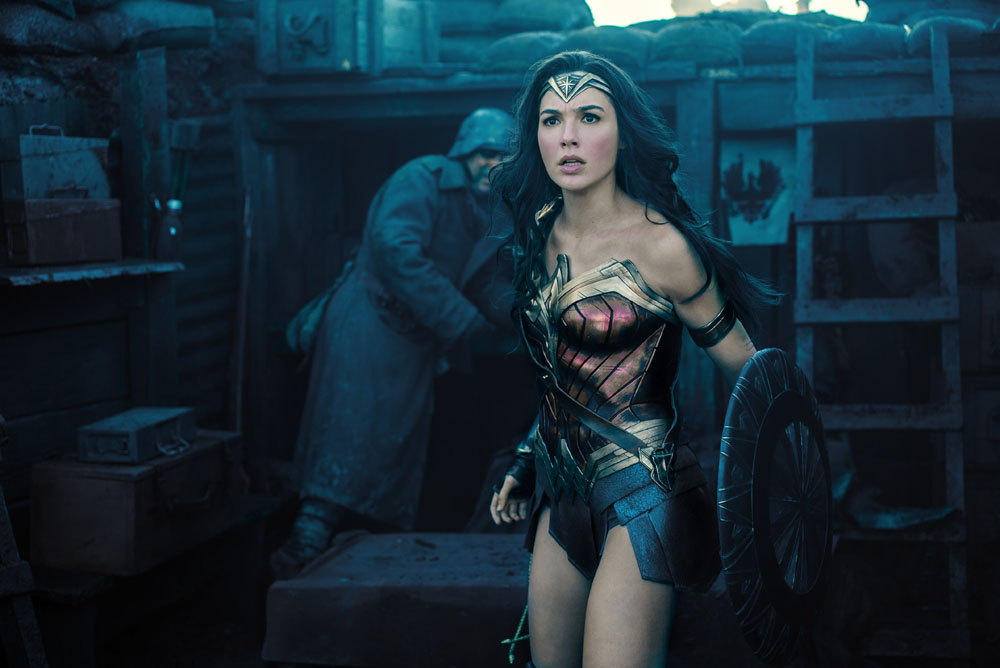 WALSH: Patty is definitely in that latter camp. She’s meticulous about how a word is pronounced. The weight of delivery; where the emphasis falls. She’s very much about the language and the writing.
WALSH: Patty is definitely in that latter camp. She’s meticulous about how a word is pronounced. The weight of delivery; where the emphasis falls. She’s very much about the language and the writing.
HULLFISH: Lots of people have said the editor/director relationship is very much like a marriage.
WALSH: At least at home you can walk out of the room …
HULLFISH: I’m going to let you cut that out if you need to stay married. How is a marriage between a director and an editor like a marriage between a husband and a wife.
WALSH: It’s an exaggeration isn’t it? We’re there to service the director’s vision. I like the word collaboration. Matthew was going for an interview on his movie a few weeks ago and he said, “What happens?” And I said, “What this is is an opportunity to look at each other and decide if you can spend the next six or nine months in a room together. It’s like a first date”
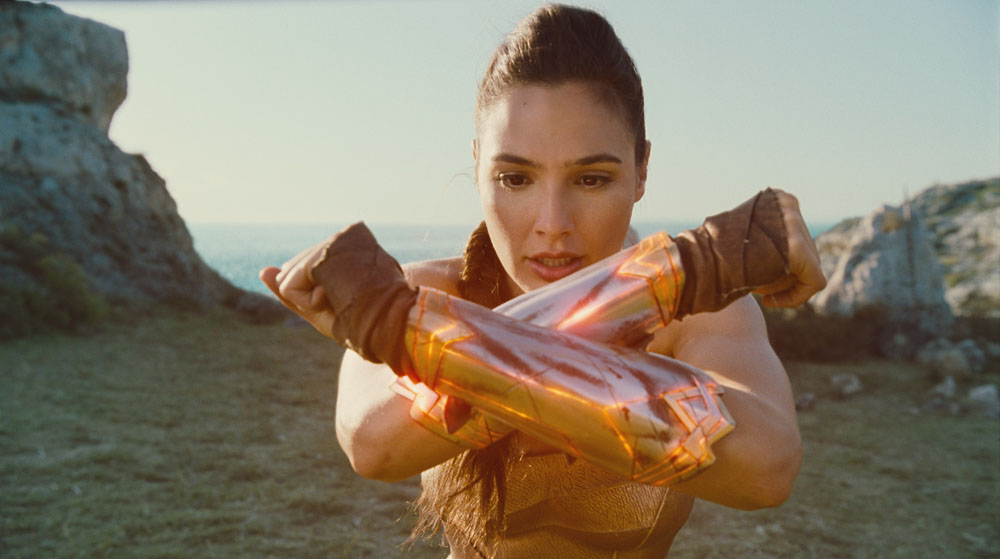 HULLFISH: Right.
HULLFISH: Right.
WALSH: They’re not interviewing you really. They already know you can do the job or you wouldn’t be there. But do you want to spend that time in a room together? Is that going to be something you might enjoy doing? I have been to meetings where the director and I take one look at each other and spent the next half an hour wishing we had never gone into the room together; “Oh no, this is never going to work. I can’t do this job. What a shame because the script was good, but this is not going to work”
HULLFISH: Here are the reasons why I think it’s like a marriage and we can disagree which is fine ‘cause that’s the whole point. So editing is about communication, trust, and patience.
WALSH: Good.
HULLFISH: So the question is: are those similar in a marriage and a director/editor relationship?
WALSH:Yeah, absolutely.
HULLFISH: In those ways, but no other ways.
WALSH: Yes. Communication. If you are not going to share your feelings and your fears, desires, stresses and tension – the stress and tension can be immense.
HULLFISH: Especially on the director.
WALSH: Especially on the director. When you start previewing and turning it around fast and you’ve got a couple of weeks and you’ve got to shoot something, turn it around again, preview and change the music and new VFX come in and of course all right at the point when the director is away doing press the trust has to be there because they have to leave the editor with it and trust that the work is going to get done.
HULLFISH: We were talking a little about Matthew’s interview. What about your interview? How did you get this gig? Did she like some of your previous work or was there just a good chemistry in the interview?
WALSH: Yeah, I think to be honest with you I was the only person available at the time.
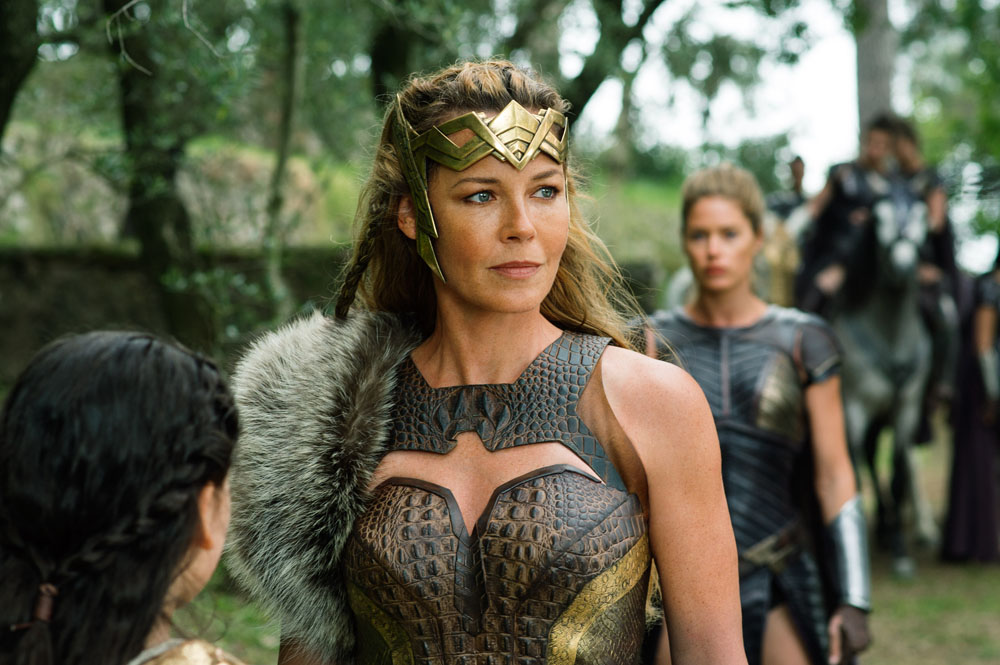 HULLFISH: (laughs) I was available and they didn’t pick me.
HULLFISH: (laughs) I was available and they didn’t pick me.
WALSH: I have worked for Warners before. They were shooting here in the UK, and because all of post was UK-based they needed to hire a UK-based editor. Of the editors around in November 2015 I guess I came out in front of everybody else. I met PJ on a location scout at the Savoy Hotel in London. We had coffee and spent about an hour together and we got on really well. We still do believe it or not. We got to the end of 18 months still liking each other a lot. We had a great time.
HULLFISH: One of those things that I think is really interesting with editors and directors is the ones that have worked with each other multiple times. You did a couple of projects with Kenneth Branagh right?
WALSH: Yes.
HULLFISH:You must’ve liked each other enough to work together.
WALSH: Yeah, I love Ken. He’s in post on Murder on the Orient Express, which I couldn’t do because it was too soon and I was too late. We tried to work it out but we couldn’t, so someone else is doing that one.
HULLFISH: Ann Coates should do it.
WALSH: Ann Coates did the original with Sidney Lumet in 1974. Ken is playing Poirot in this version. We are going to get together again hopefully early next year to do Artemis Fowl for Disney. We did Cinderella for Disney which was good for them, so they came back to Ken with Artemis Fowl, so that’s next February.
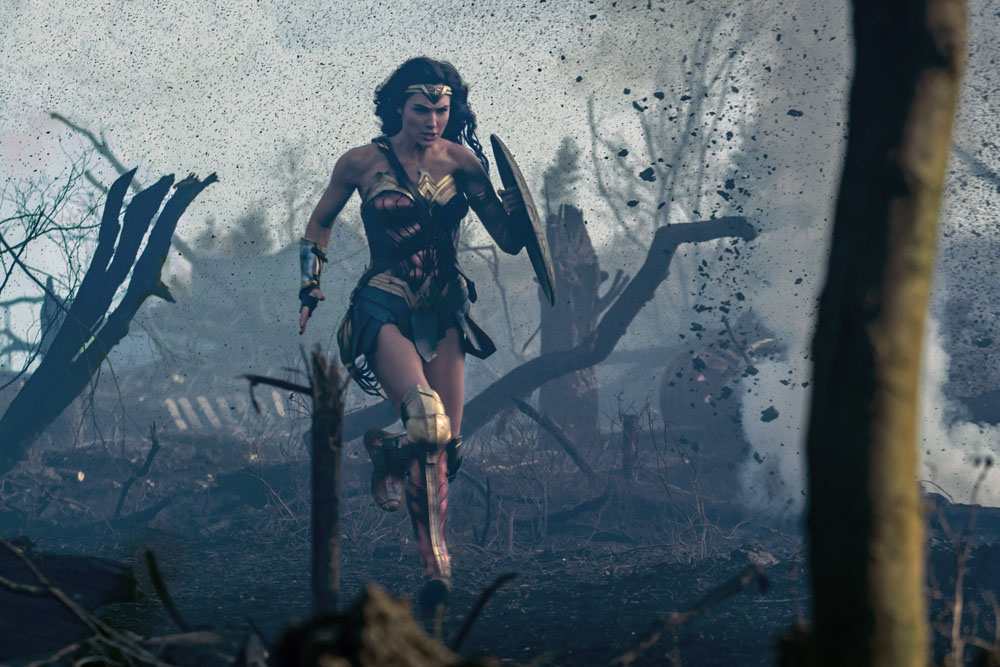 HULLFISH: Getting back to Wonder Woman, do you remember what you temped with? What’s your approach or opinion on adding temp music and when you do it.
HULLFISH: Getting back to Wonder Woman, do you remember what you temped with? What’s your approach or opinion on adding temp music and when you do it.
WALSH: A lot of the temp came from Patty. She had very fixed ideas about what she wanted to hear. And a lot of that stuck until quite late in the process. She’s a huge Hans Zimmer fan. Who isn’t? If Patty and I had any difference of opinion it was usually about music. We still have differences of opinion about the final mix even after Rupert Gregson Williams had written his score. We have differences about music and the way music is used. It’s such a subjective area, isn’t it?
HULLFISH: Yes. So that’s an interesting sentence you just said about music and how it is used. What is the purpose of that music and how do you actually use the music?
WALSH: I personally would use less. I really enjoy – where possible – allowing actors to do their job without the assistance of music telling me what I need… what they want me to think… I find a lot of movies these days are over scored. I guess that’s what I’m saying: that there is just too much music.
HULLFISH: There are some directors who don’t want any temp at all until the screenings. Have you worked with anybody like that?
WALSH: No. I find most people these days are so used to using temp music and have such a strong opinion about music that they expect music from the outset. It’s a bit of an issue.
HULLFISH: In our last conversation, we talked a little about temp music and you talked about how you have gone to other people’s movies and thought, “Well they temped with Hans Zimmer…”
WALSH: Exactly.
HULLFISH: That just happened to me with somebody that I interviewed for Art of the Cut. I watched their movie and I said, “Oh my gosh! That’s the score from Sicario!They had to have temped with Sicario.” Sure enough, I asked the editor and he said, “Oh yeah, we temped with a lot of Sicario.”
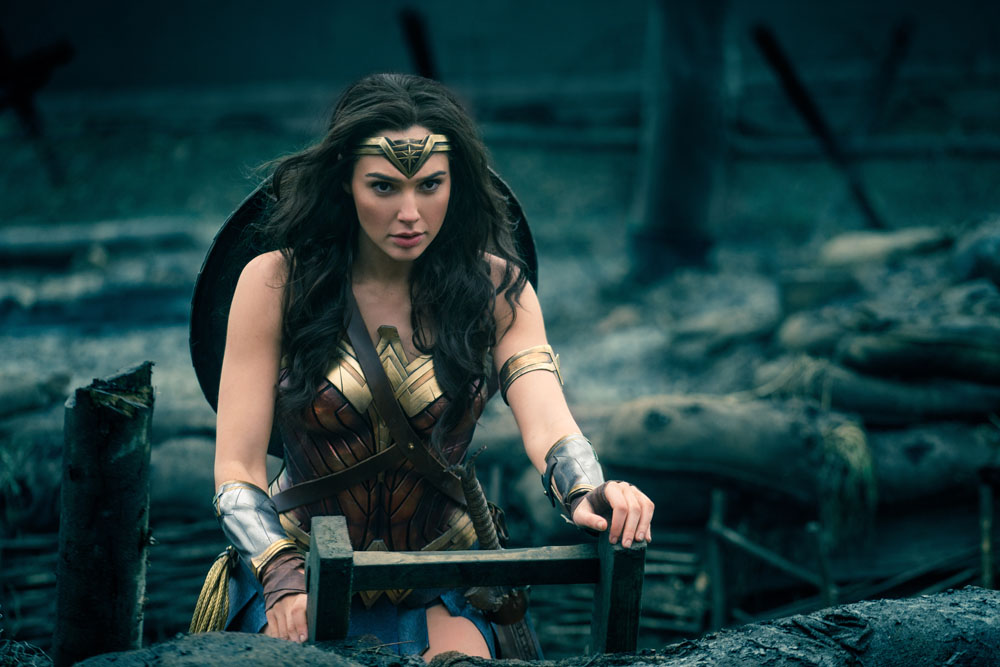 WALSH: It’s a great score, but instantly recognizable. You can’t take a score like Sicario and have it not sound like Sicario. It’s so distinctive.
WALSH: It’s a great score, but instantly recognizable. You can’t take a score like Sicario and have it not sound like Sicario. It’s so distinctive.
HULLFISH: You’re forcing the composer’s hand.
WALSH: You are and there’s nothing I can do about it because that’s somebody else’s call. I wish we could do it another way but we can’t. You can’t go to a preview without a fully finished movie effectively.
HULLFISH: I’m cutting right now and the composer and I made an agreement that I would send him the reels without temp.
WALSH: At least that way he’ll get a perspective on how the movie plays without being swayed in some way by those choices. We had lots of music editors on Wonder Woman because we worked a little bit in LA and a little in the UK and at one point we had four music editors working simultaneously: two in the UK and two in LA, all coming at it from a different perspective and all trying to make their own impact.
Patty was really tough to shift. She had her favorite pieces and they stayed for a long, long time .
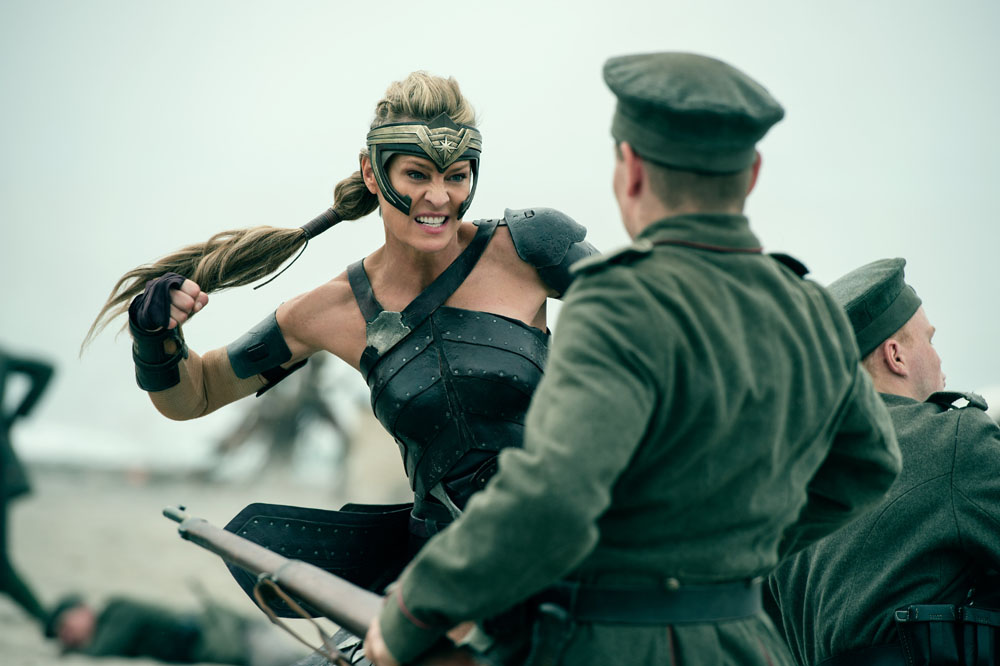 HULLFISH: Was she pulling that stuff from other soundtracks.
HULLFISH: Was she pulling that stuff from other soundtracks.
WALSH: A lot of it was music from when she was writing. She writes with that music playing. So it was hard to shift her, and even when we got into scoring she found that it was very hard to separate herself from the temp.
HULLFISH: One last question for you but its a big one. This movie is a lot of big action sequences. How do you approach those? You walk in – you’ve already seen all the dailies on the big screen – and then you sit down to those same dailies in your edit suite. What happens when you sit down at the Avid?
WALSH: It’s pretty straight forward. There is so much preparation in that area. Most of the action is shot by the second unit and stunt people for the fight scenes, so they’ve been heavily choreographed and before I’ve got involved, they have usually been stunt-vizzed. Meaning that the stunt department has shot the sequence already with stunt performers and I can take that from them and copy it – to a certain extent – and then adjust from that point on. So things like speed ramps can be played around with and motion effects, all that kind of stuff, camera shake, and motion blur we can add later. However, there is a sequence in Wonder Woman of the first World War trenches that you can’t choreograph past a certain point. You can choreograph sections of it where Wonder Woman is involved, but then there is the general melee of battle. That’s a case of just sitting down, going through the material and whittling it down to the best pieces to tell the story. With those sequences – as you know from your experience – you start with the best bits of the British soldiers – the best bits of the Germans soldiers. You select that and then you boil down and simmer until you’ve got it down to whatever it is now – about 5 or 6 minutes – just simple editing by omission.
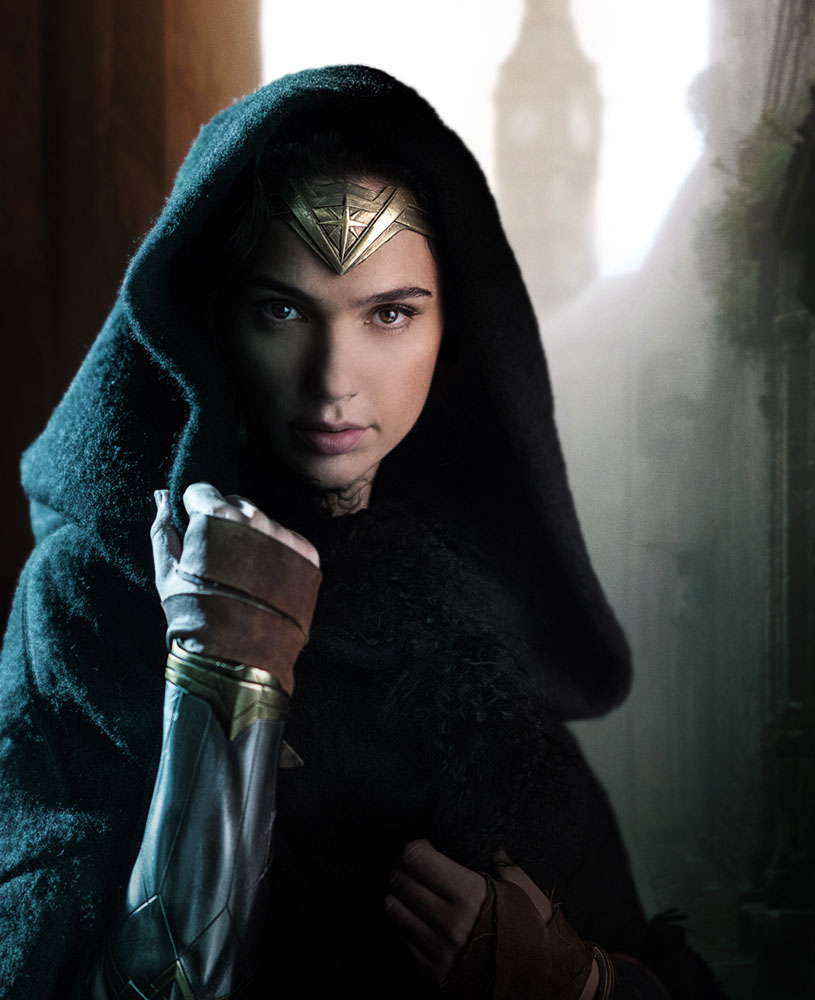 HULLFISH: How are you doing that? Are you creating selects reels and then using the select reels as a source to create your sequence?
HULLFISH: How are you doing that? Are you creating selects reels and then using the select reels as a source to create your sequence?
WALSH: Yeah, that’s what I do. We are shooting with multiple cameras so you might have 4 cameras or 5 cameras on a section of the British soldiers coming out of the trenches and charging across no-man’s land. Several takes, several resets, lots of different sizes and angles, lenses, tracks, cranes – you name it. It’s just a case of running each camera to find the best pieces in each take. Whatever hits you: “I like the fall, like the hit, someone hitting the floor and the mud splashes…” Things you react to. I just clip them and join them all end to end. It’s pretty old fashioned. It’s what we used to do in the old days. You’d just pull a little bit of film out of a roll and stick it on another roll. That’s the technique I use and subbing it down to a point where you’ve got everything you need to tell the story and nothing more.
HULLFISH: When you cut a simpler scene like a romance scene or a little conversation between the romantic leads, are you using that same techniques or are you going to your bins or do you still create select reels?
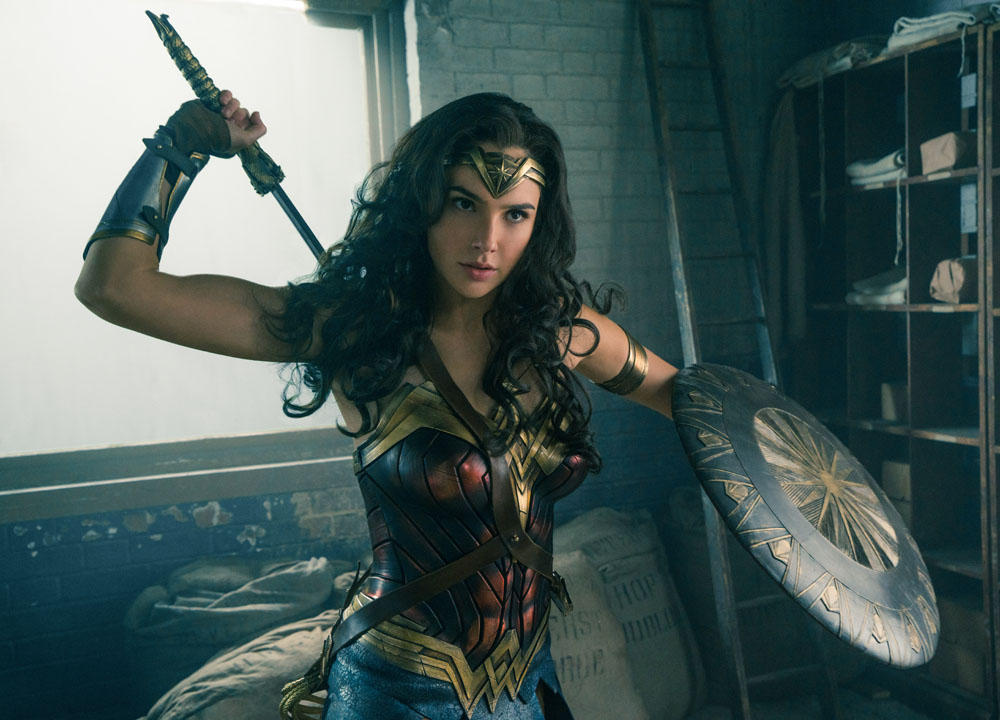 WALSH: No, that’s just gut reaction stuff. I usually decide what I’m going to use while I’m in the dailies screening room for a simpler sequence. If there are three takes of a line that I can’t decide about, I’ll just string 1,2,3 back to back and just play them and throw out the one that’s the loser.
WALSH: No, that’s just gut reaction stuff. I usually decide what I’m going to use while I’m in the dailies screening room for a simpler sequence. If there are three takes of a line that I can’t decide about, I’ll just string 1,2,3 back to back and just play them and throw out the one that’s the loser.
HULLFISH: I saw a lot of slow mo stuff in the trailer. How do you determine when you can get in and out of a slow mo section? Because you’re really playing with time at that point.
WALSH: Patty liked to shoot that at 500 frames per second so that we can manipulate it later. She isn’t a big fan of that technique of chopping high speed into slow mo back out to normal speed. There was a conscious decision to make Wonder Woman’s action as elegant and feminine as possible, which I know is a contradiction when that elegance is kicking the sh*t out of German soldiers but that’s what we tried to do: use slow mo when it’s about highlighting a character to look their best. There’s no point in slowing something down if it’s going to look ugly or clumsy and it makes the actor look like they don’t know what they are doing. So it’s about making careful choices.
HULLFISH: Martin, I really appreciate your time.
WALSH: Good to talk
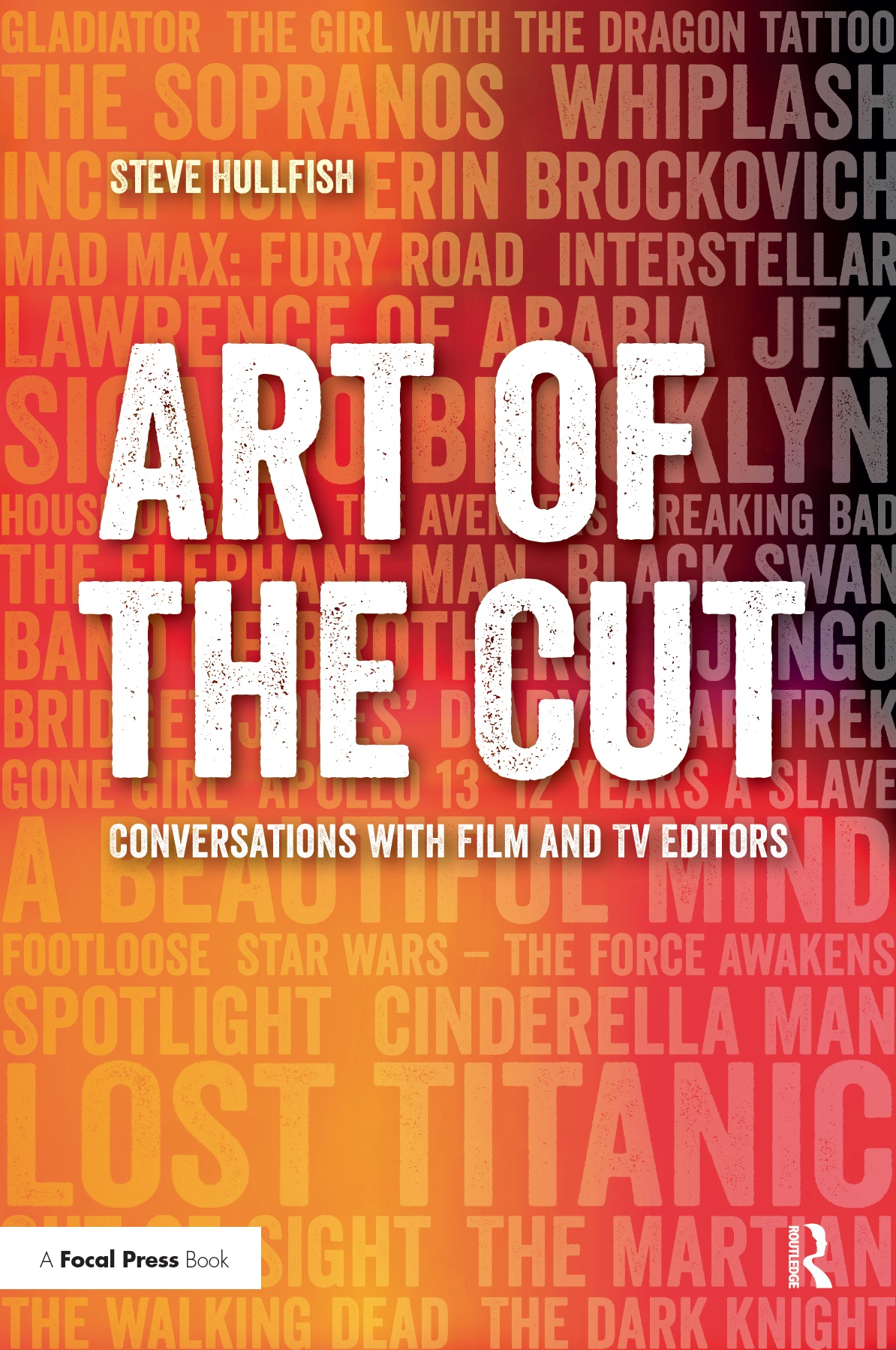 Thanks to Charles Shin, Todd Peterson and Hajar Elfared from Moviola for transcribing this interview.
Thanks to Charles Shin, Todd Peterson and Hajar Elfared from Moviola for transcribing this interview.
To read more interviews in the Art of the Cut series, check out THIS LINK and follow me on Twitter @stevehullfish
The first 50 Art of the Cut interviews have been curated into a book, “Art of the Cut: Conversations with Film and TV editors.” The book is not merely a collection of interviews, but was edited into topics that read like a massive, virtual roundtable discussion of some of the most important topics to editors everywhere: storytelling, pacing, rhythm, collaboration with directors, approach to a scene and more. Oscar nominee, Dody Dorn, ACE, said of the book: “Congratulations on putting together such a wonderful book. I can see why so many editors enjoy talking with you. The depth and insightfulness of your questions makes the answers so much more interesting than the garden variety interview. It is truly a wonderful resource for anyone who is in love with or fascinated by the alchemy of editing.” MPEG’s Cinemontage magazine said of the book: “Steve Hullfish knows how to talk with editors.…creates a mosaic of advice that will interest both veterans and newcomers to the field. It will be especially valuable for those who aspire to join what Hullfish calls, “the brotherhood and sisterhood of editors.” CinemaEditors Magazine says, “For the novice editor, this book is essential… For the more experienced editor there is plenty of useful information in it… Hullfish’s book is an awesome piece of text editing itself. The results make me recommend it to all. I am placing this book on my shelf of editing books and I urge others to do the same.”

Filmtools
Filmmakers go-to destination for pre-production, production & post production equipment!
Shop Now